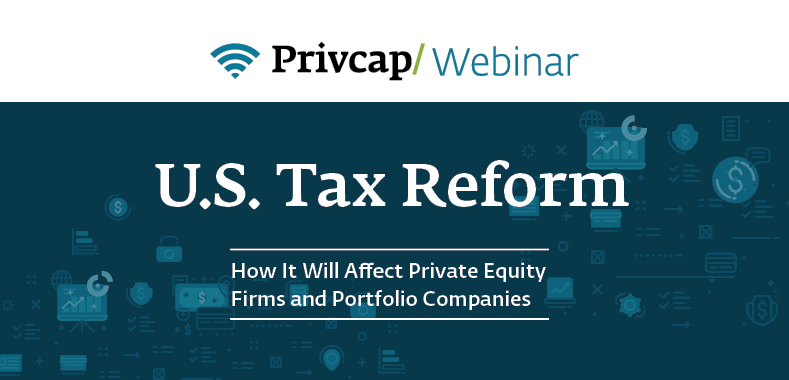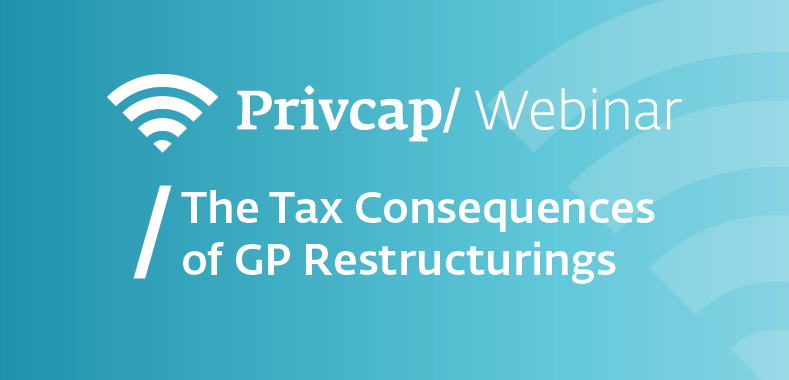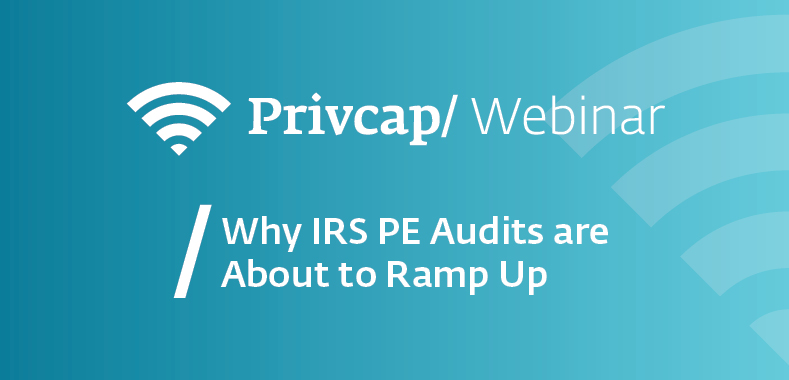What GPs Should Know About Carried Interest and Wealth Transfer
Download the article here
Changes to tax and other regulations could affect how carried interest is treated; Thomas Wright and Lindsay Hill of RSM and David Stein of Withersworldwide explain the road ahead.
Privcap: How complicated—and widespread—is gifting points of carried interest?

David Stein, Withersworldwide: People have been doing it for quite some time. From a tax planning point of view, there are a number of technical rules that come into play, so it can be a bit complicated. But the structures themselves, at the end of the day, can be relatively simple in terms of implementation. In terms of why people do it, it’s really about taking an asset that has high growth potential and the ability to be valued on a current basis at a relatively low number relative to where it might go in the future. And carried interest is a perfect example of that kind of asset.
Is gifted carried interest typically placed in a trust? And is there anything unique about the way this trust is set up that people contemplating this process need to understand?

RSM US LLP
Thomas Wright, RSM: A very favorite technique of estate planners is the use of a type of trust where we include some language in the document that makes it what we refer to as a grantor trust for income tax purposes. The significance of that is the donor—the senior generation who creates the trust—gets the pleasure, so to speak, of getting to pay the income tax on the income and gains reported by the trust that, absent the grantor trust provision, would otherwise be a tax-paying trust. Trusts are normally tax-paying animals, so they pay their own income tax.
But this grantor trust feature that we all like to use shifts the income tax burden back to the donor and allows the donor to report all of the income and gains of the trust on their personal tax return— and therefore allows the trust to grow tax free. The assets are growing tax-free because the senior generation, the grantor to the trust, is paying the tax liability.
Stein: The grantor trust status also affords one other benefit, which is that a fund principal looking to transfer assets into a trust—if they have a more significant current value—may be able to do the transfer through a combination of a gift and an installment sale. And the installment sale to that trust from an income tax point of view would not be a recognition event, because the trust is essentially ignored for income tax purposes. So the carry can be moved into the trust even if it’s at a level above what the principal can gift tax-free through a sale mechanism.
And then, that current value will be paid back over time on an installment note. But the upside above the current value, plus a small interest factor, would be retained in the trust.
If a fund is wildly successful and the corresponding carry is substantial, would the grantor find him or herself paying all of the taxes on that carry, but receiving none of the benefit of those points of carry?
Stein: We have seen that actually happen in a couple of cases. The way that’s typically addressed is there are a couple of different ways that grantor trust status is achieved in the first place. One of the ways is through a specific power that’s given to the grantor. And if the grantor relinquishes that power and if none of the other grantor trust attributes are present, then the trust would become a non-grantor trust and start having to pay its own taxes.
Let’s talk about an important step that takes place at the outset of the gifting process, and that is assigning a valuation to the points of carry. Lindsay, can you walk us through that process?

RSM US LLP
Lindsay Hill, RSM: There’s a lot involved in the valuation process, and it’s pretty complex. We all know that private equity funds, hedge funds, and the related carry are not like a manufacturing entity. We’re not just projecting volume and sales prices.
We’re dealing with a lot more uncertain inputs, market performance being one of them. And the best way that we capture that in a valuation setting is through simulation. So in the case of a private equity fund, we would be using Monte Carlo simulation to come up with the exit proceeds for each planned portfolio company or expected portfolio company. And that’s really where our task becomes labor intensive, because we need to have extensive upfront discussions with the private equity principals or with their finance teams to develop the expectation for when the investments will be made.
David, let’s say you had a client who is badgering you for a ballpark of what the value of carry in a brand new fund might be. What would you say?
Stein: After all the hedging and caveats and so forth, if I had to put a number or a range on the table, I would usually tell people our experience has been that the valuations will often come out expressed as a percentage of the fund size at some low single-digit percentage. So in a $1-billion fund, the carry might be valued somewhere between $10 million and $40 million or something like that. And then, each individual principal is only going to have a portion of that.
Tommy, in transferring points of carry, is there a recommended maximum valuation amount?
Wright: Every individual has a lifetime transfer exemption that they can use to make gifts during their lifetime. Or they can save it and use it as an estate tax exemption. But the idea with estate planning is to get appreciation out of your estate. So if you can financially afford it, then the recommended course of action is to use your exemption—or most of your exemption—during your life and make gifts.
Under current law, a single person can gift almost $5.5 million and not pay any gift tax. And then let that asset grow outside of their estate so that they’ve shifted that future wealth. You might ask, who pays the gift taxes, the donor or the [recipient]? Most people are under the impression that gift tax is paid by the recipient, and it’s not. Gift tax is paid by the donor, the grantor—the PE executive or principal, in this case.
When there is gift tax payable because you transferred an asset in excess of the $5.5 million, then there is a 40 percent gift tax paid by the donor. The recipient always receives the gift income-tax-free.
In many cases, principals of funds will gift points of carry to nonprofits like charities. And, of course, the charities will want to tap the money if it comes in. How would that work? Are there penalties, and does it change the dynamics of the trust?
Stein: What we see probably most often is that charities will be included as permissive beneficiaries under a trust that’s otherwise for the family, so that it’s one of the possible vent-offs if the trust ends up growing to a very large size and there’s more than enough there.
And there may be a view that develops that it would be better for some of that to be shunted off to charitable causes. So that can be done through the same trust that is used for the family. There are specific charitable planning techniques where the carry might be gifted, to charity or into a so-called split-interest trust like a charitable lead trust.
Wright: In the area of transfers of carried interests, we walk a little tightrope to avoid a technical tax issue. And in the industry, we refer to it as the “vertical slice.” So in transferring carried interests, we have to scoop up and carry along with it a little bit of everything we own.
Is there any pending regulatory change, legislation, or reforms that you are watching that will impact this process?
Wright: As we all know, the world has changed a little bit as a result of the outcome of the [presidential] election. And I think it’s safe to say that the environment that exists today is fairly ripe for comprehensive tax reform. That could be fairly extensive in terms of income tax and possibly estate tax as well. One of the things that the Trump plan outlined prior to the election… included the taxation of carried interest as ordinary income. There’ve been numerous bills proposed for the last eight, nine years on taxation of carried interest, none of which has ultimately gone anywhere.
Stein: There’s one other regulatory development we’re keeping an eye on, which is regulations under a code section called 2704 that have been proposed. Those would potentially cut back on valuation discounts based on certain state law restrictions. They’re targeted at family enterprises and family-owned entities and wouldn’t necessarily affect the typical, more broadly held private equity fund carry structure.
The good news from the private equity side of the world is that so much of the valuation discounts that are achieved on the carry planning happened through the discounted cash flows and Monte Carlo simulations. And there is an overlay for illiquidity and lack of marketability and so forth that are the targets of these regulations. But I think there would still be, in the wake of almost any reasonable regulations, very significant discounts achievable for folks in this.
What every private fund professional needs to know about taxes, valuation and wealth transfer.


















